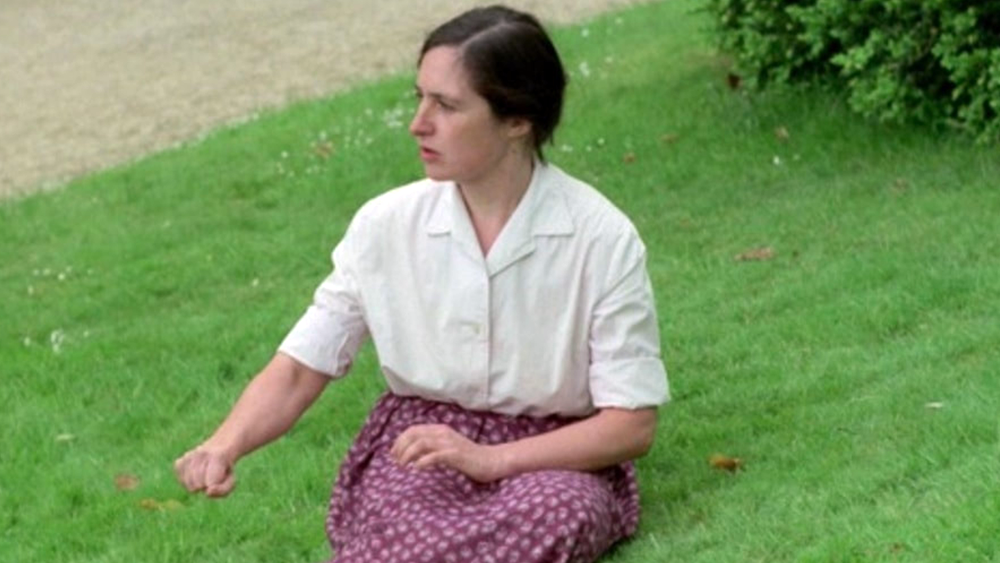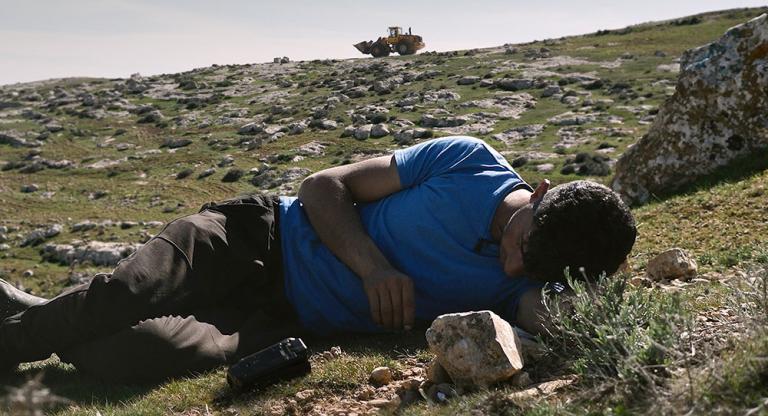The cinema of Jean-Marie Straub and Danièle Huillet is one of cartographical propositions. It maps interpersonal, historical, and natural geographies. They were perfectionists and did not allow for a simple geometry to exist without accounting for its effect, graphing out the position of every body to another and the space they inhabited on-screen so that the total architectonic field suggested by their camera might be understood as a series of relations. Every scenario presented in their films is an opportunity for a calculation. The duo also used this principle in their landscapes, which often acted as the axis of a film—as in Every Revolution Is a Throw of the Dice (1977). The first shot in the film pans the grounds of the Père Lachaise cemetery, accounting for both the pastoral and the political in a sweeping back-and-forth pan that charts the entire filmic space the audience will come to know over the next ten minutes, the landscape becoming the only fixed reference for the coordinates of each player.
The first gesture from cinematographer William Lubtchansky (frequent collaborator of Straub-Huillet, Jacques Rivette, and Jean-Luc Godard) in Every Revolution Is a Throw of the Dice opens up the world to a scattering of branches and greens cast against a blank canvas sky. The camera pans right, across the sky, before landing on a horse chestnut opposite where the scenario began. The frame then proceeds down the leaves of the tree, ending on a monument with the words “TO THE DEAD OF THE COMMUNE 21-28 MAY 1871.” The gesture’s momentum carries the movement down a half-cobbled pathway that leads to a hill, the home of the opening trees, and underneath them nine people arranged in a semicircle. They sit atop the final resting place of the last Communards, where a monument to the more than 10,000 members of the Paris Commune that were killed or executed during the “bloody week” of May 21-28, 1871 has been erected.
A sudden cut to the man positioned in the center, who begins reciting the Stéphane Mallarmé poem A Throw of Dice Will Never Abolish Chance (1897). Mallarmé harnessed typographic tools such as case, size, and slant to chart a course following eight different paths that intersect at various ends. Practically, this effect is accomplished via Straub-Huillet’s use of the nine narrators that each take on a different “case” of the text. Huillet herself stars in the film playing “large lower-case roman” and speaking the main portion.
The work is radical for its use of white space, actualized in the aching canyons between phrasings and the distance of every speaker from another. There was no shooting script for the film (it is a recitation of the poem in full, without major deviation) but there were graphs to map the position of every narrator to the other and their environment. Straub commented that the arrangement of the speakers is not unlike the hemicycle in Greek theater. The filmmakers’ relationship to language was one of constant tension—using only direct sound and often enrolling their friends or non-actors to deliver adapted (sometimes centuries-old) dialogues in line with a Brechtian theory of alienation.
The poem ends with Huillet declaring “Every thought emits a roll of dice.” In the context of the film’s title (attributed to Jules Michelet) Straub-Huillet liken the revolution to a thought. This isn’t to call revolution fantastical or utopian, but to acknowledge class consciousness as the seed from which revolution is born. The last act of the film cuts to the cityscape beyond the Communards’ Wall, illuminating an entire world unseen to this point and taking the Communards’ struggle back to the outside world—viewing the city that was once theirs. Though their roll was fated toward failure, Straub-Huillet still believed in taking up the dice again.
Every Revolution Is a Throw of the Dice premiered alongside The Theatre of Matters (1977), a French film that follows a theater troupe and was directed by the Cahiers critic and Trafic co-founder Jean-Claude Biette. The former was dedicated to Frans van de Staak, Jean Narboni, Jacques Rivette, and “many others.” Today, it will be shown alongside van de Staak’s Deed Undone (1989) by the new film troupe “The Theater of Matters.” Straub had many kind words for van de Staak, not the least of which were in a letter published in Cahiers du Cinema in 2001 following the latter’s death. “He was one of the three great European filmmakers […] whose films nobody knows because he is the only heir to Dziga Vertov.”
Deed Undone takes a sparse approach to language, scarcely a few dozen words spoken over the course of its run—it resembles a counterside to Straub’s own approach to language. The film opens with a poem from the Dutch writer Gerrit Kouwenaar and occasionally offers fragments of other poems to the audience in the form of written entries from the film’s characters and intertitles. Van de Staak’s film follows two couples played by eight different actors, whose motivations and purposes are as interchangeable as the persons portraying them.
The presence behind these people’s existence in the film was of little interest to van de Staak, who said in an interview with Filmkrant, “I show the way to the attempt and the way back, in whatever field it happens […] the result does not matter.” The film is not defined by psychology, but instead by its movements and countermovements.
The precise, almost staccato rhythms of Deed Undone are attributable to how the film maps relations as they appear. Its metric nature is measured in sporadic musical passages and heel clicks, where domestic scenes are sandwiched between written or musical interludes and characters pacing back-and-forth across the streets. In line with the film's vérité nature, the camera confronts the characters, whose movements overlap to create new compositions along a pre-ordained path for both. It is a direct cinema without answers, that traces the footsteps of phantoms.
Every Revolution Is a Throw of the Dice + Deed Undone screen this evening, October 22, at BAM as part of the series “Frans van de Staak.”




